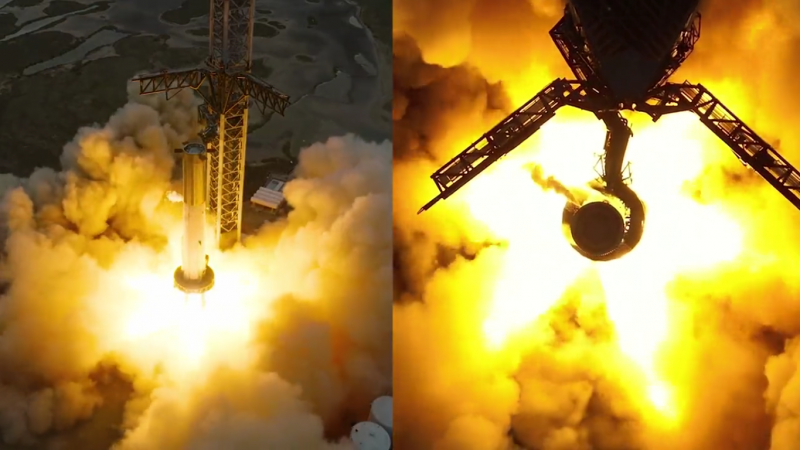
Starship fires (almost) all her engines
SpaceX’s Starship performed a successful full-duration static test fire at 3:13 p.m. CST today (21:13 UTC Thursday, February 9, 2023) at Starbase in Boca Chica, Texas. The test – in which the (first stage) engines are ignited (“fired”), but the vehicle does not launch (stays “static”) – involved the Starship Super Heavy Booster 7. SpaceX is developing Starship as a fully-reusable super heavy-lift launch vehicle. It’ll be integral to missions to the moon and Mars. Starship stands 390 feet tall (120 meters tall). It has more than twice the thrust of the Saturn V rockets that carried the first astronauts to the moon. It’s designed to be the tallest and most powerful launch vehicle ever built, and the first capable of total reusability. Woo-hoo!
Views from drone of Booster 7's static fire test pic.twitter.com/KN4sk1nohf
— SpaceX (@SpaceX) February 9, 2023
SpaceX announced the test’s outcome via Twitter:
First static fire attempt of 33 Raptor engines on Booster 7 https://t.co/3haor6owfa
— SpaceX (@SpaceX) February 9, 2023
According to SpaceX CEO Elon Musk, speaking via Twitter, flight controllers disabled one of the craft’s 33 Raptor engines prior to the successful test. Another Raptor cut itself off mid-burn:
Team turned off 1 engine just before start & 1 stopped itself, so 31 engines fired overall.
But still enough engines to reach orbit! https://t.co/QYx3oVM4Gw
— Elon Musk (@elonmusk) February 9, 2023
Firing test was a record-setter
Some back-of-a-napkin math had New Zealand-based spaceflight reporter Marcus House wondering if today’s test fire set a record for the most thrust ever generated by a booster.
Was this the most thrust in history for any rocket? That would be quite the headline. If those engines were throttled up past ~65% for the 31, (assuming 230t full thrust per engine), then it should have beat the N1 I think.
— Marcus House (@MarcusHouse) February 9, 2023
It turns out Starship – burning at less than 50 percent of capacity during the hot fire test – didn’t outpower the ill-fated Soviet N1 moonship, but another of that craft’s records was surpassed. Today’s test involved 31 engines firing simultaneously, one more than the 30 engines on the N1 that could have flown cosmonauts to the moon.
SpaceX did beat an American spaceflight record dating back to the Apollo Era and the height of the Space Race. When Starship stretched its legs for the first time, it outpowered the Saturn V that carried NASA astronauts to the moon. The throttled-back test of Starship Heavy Booster 7 produced 7.9 million lbf (3,600 metric tons) of thrust. Firing at maximum, the Saturn V pushed 7.6 million lbf (3,450 metric tons) of force, setting a record that stood for 55 years.
Super Heavy Booster 7 completed a full duration static fire test of 31 Raptor engines, producing 7.9 million lbf of thrust (~3,600 metric tons) – less than half of the booster’s capability pic.twitter.com/cNLmp3Pn7G
— SpaceX (@SpaceX) February 10, 2023
Tearing up Texas!
As previously reported by EarthSky.org, Starship has already cleared all the other hurdles on the path to an orbital test flight. The Federal Aviation Administration must grant a license to fly before the full Starship stack – the booster tested today topped by a Starship cargo craft – can lift off on its maiden voyage.
Part of the FAA’s concern involves the impact of testing at Starbase on the local ecology. The site is adjacent to the Las Palomas Wildlife Management Area. Video of today’s test provided by NASASpaceFlight.com shows flocks of birds startling into flight as the booster fires. The power of the 31 engines tore loose chunks of the Texas landscape that can be heard falling back to Earth near remote cameras.
Bottom line: SpaceX performed a successful full-duration static test fire of the Starship Heavy Booster on Thursday, February 9, 2023.











